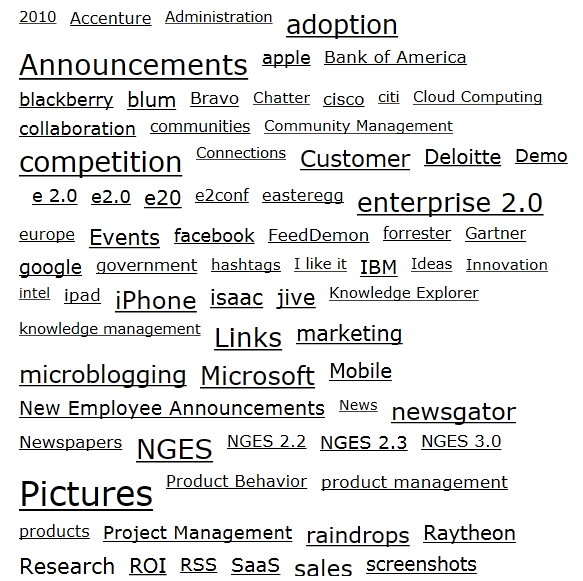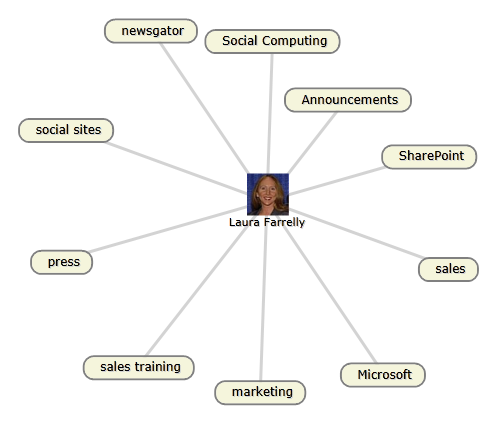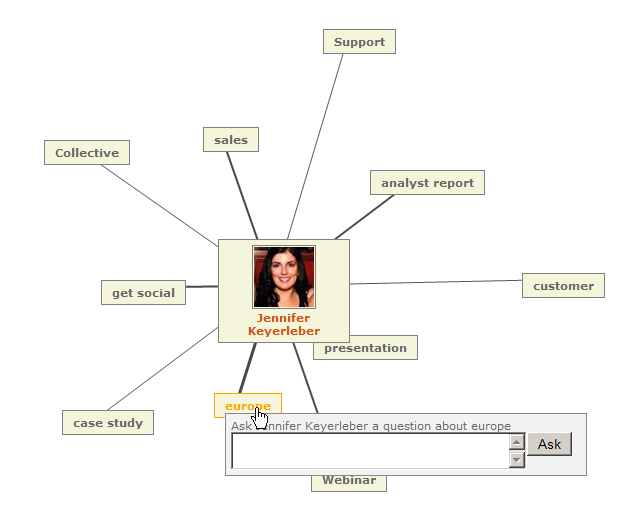Finding users and topics using the expertise feature
Three web parts provide users the ability to search for users based on their areas of expertise, or to discover what a particular user’s interests or areas of expertise are. These are available under the NewsGator Spotlight Web Parts category when adding web parts to any page. They are:
- Expertise Browser
- Expertise Search
- Areas of Expertise
Expertise Browser web part
The Expertise Browser web part now comes in two versions: the original, a Silverlight web part that requires users to have Silverlight 4 or higher to use; and the new HTML5 version, with no such Silverlight requirement, but that does require a browser that has HTML5 support to have full functionality.
Only the HTML5 version is now available in the web part gallery for deployment; however those with the Silverlight version installed finds that it works the same as before.
The Expertise Browser web part allows users to navigate through the expertise data in an unstructured pattern. It requires extra steps to deploy properly.
For deployment instructions, see Installing the Expertise Browser Web Part under Setting Up Spotlight.
The view begins with the top 50 highest scoring tags in the system arranged alphabetically and sized by overall score.

Click on any of these tags
Clicking one of these tags creates a view centered on that tag with up to ten users arrayed around it (as pictured on the left, below). User image distance from the tag is inversely proportional to their score (the highest scoring users are closest to the tag).

User images linked to the tag is displayed

Tags linked with a user is displayed
Clicking on any user image in this view re-centers the view on that user, with up to ten of that user’s highest scored tags displayed around them (as pictured on the right, above).
As is done in the tag-centered view, the highest scoring tags for that person are displayed nearest to the person. Clicking any tag re-centers the view on that tag (left, above).
Proceeding this way, you can continue switching between tag-centered and user-centered views.
This can be an effective way to find a person who has expertise on a particular topic. When you have done so, it is natural to want to ask that person a question. You can easily do so from either view.
Just move your mouse pointer over the topic you want to ask about (when in the person-centered view), or over the person you want to ask (when in the tag-centered view).
In the former case (pictured below right), you'll see a popup that allows you to ask that person a question about the topic represented by the tag by just typing your question and clicking Post.
You don't need to include the person's @ target, nor the topic's hashtag: these are both added automatically after you click Post.
In the latter case, (pictured below left) you'll see “mini profile” card popup. Near the bottom of the card is a link that brings up the same popup for asking a question.
In the example pictured, the link text is “Ask Christy Schoon a question about Social Computing”; this varies depending on the person and topic selected.

Mini-profile card pop-up

Mini profile card provides option to ask questions to viewers
This same mini profile card provides other actions to the viewer. Clicking on the user’s name at the top takes you to the full profile page of that person.
Clicking on the Send an email text near the bottom opens a window for composing an email to that person.